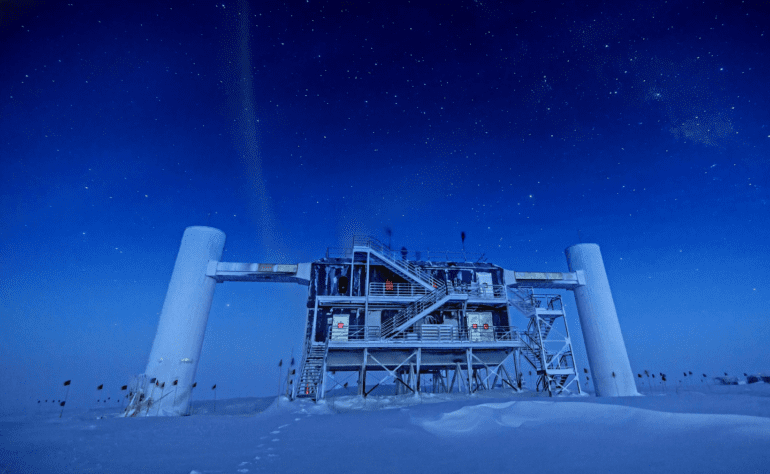TL;DR:
- Sparse convolutional neural networks (SCNNs) revolutionize data analysis in experimental physics.
- SCNNs enable researchers to focus on relevant data while filtering out the noise, significantly speeding up real-time analysis.
- SCNNs have been successfully applied in neutrino experiments, particle collisions, and high-energy physics.
- The integration of SCNNs marks a historical shift where computer science leads the way in computational advancements.
- SCNNs offer immense potential for accelerating scientific discoveries and pushing the boundaries of knowledge.
Main AI News:
Groundbreaking advancements are transforming the landscape of experimental physics, thanks to the emergence of sparse convolutional neural networks (SCNNs). These powerful machine learning tools enable researchers to efficiently extract valuable information from vast amounts of data while minimizing computational resources. As the physics community embraces this transformative shift, SCNNs are set to revolutionize real-time data analysis and drive significant progress in experiments across the globe.
Traditionally, experimental physicists have navigated the challenges of sifting through copious amounts of data, with only a fraction of it containing meaningful insights. Similar to scanning a thousand-page book with a single line of text per page, the process is time-consuming and inefficient. However, the introduction of SCNNs now allows researchers to focus on the relevant parts of their data while filtering out the noise, significantly expediting the analysis process.
Dr. Kazuhiro Terao, a physicist at the prestigious SLAC National Accelerator Laboratory, draws parallels between sparse data analysis and the interpretation of photographs. While every pixel in an image can hold significance, the same cannot be said for the images physicists often encounter. In these instances, scrutinizing every detail is an unnecessary drain on time and computational resources. However, SCNNs provide a game-changing solution by directing attention only to the pertinent portions of the data.
The journey towards SCNNs began in 2012 when Benjamin Graham, then at the University of Warwick, embarked on developing a neural network capable of recognizing Chinese handwriting. Previous image-related tasks relied on convolutional neural networks (CNNs) designed for information-dense images like photographs. Graham’s breakthrough came from adapting the CNN approach, focusing the kernel only on sections of the image that contained nonzero pixel values. This innovative modification enabled the efficient identification of handwritten Chinese characters, leading to remarkable results in competition.
Building on Graham’s work, researchers further refined SCNNs, bringing this transformative technology into the realm of particle physics. Dr. Terao, involved in experiments at the Fermi National Accelerator Laboratory, seized the opportunity to leverage SCNNs for the analysis of sparse data in neutrino experiments. With the promising outcomes from applying SCNNs to simulations of the Deep Underground Neutrino Experiment (DUNE), researchers anticipate employing SCNNs during the actual experimental run, revolutionizing neutrino physics.
In addition to neutrino experiments, SCNNs demonstrate their prowess in other fields of physics. MicroBooNE, another neutrino experiment at Fermilab, benefited from the implementation of SCNNs for three-dimensional object recognition. The sparsity of data, characterized by a smattering of lines within a vast detector, aligns perfectly with SCNNs’ capabilities. Compared to standard CNNs, SCNNs enable analyzing the entire image simultaneously, significantly reducing computation time.
Expanding beyond neutrinos, SCNNs find potential applications at the Large Hadron Collider (LHC) at CERN, the world’s largest particle collider. The LHC, with 40 million collisions occurring every second, necessitates rapid and efficient data analysis. Dr. Philip Harris of the Massachusetts Institute of Technology envisions SCNNs revolutionizing the mapping of particle showers, allowing for precise determination of particle energy. By enhancing data analysis speeds by a factor of 50, SCNNs hold immense promise for accelerating scientific discoveries at the LHC.
As these cutting-edge advancements unfold, it is becoming increasingly evident that SCNNs, initially developed in the computer science realm, will soon play a vital role in major experiments in neutrino physics (DUNE), neutrino astronomy (IceCube), and high-energy physics (the LHC). SCNNs offer a powerful and efficient solution to extract valuable insights from sparse data, ushering in a new era of accelerated scientific progress.
Indeed, the fusion of physics and computer science is propelling the boundaries of knowledge. Dr. Graham, the pioneer behind the concept of SCNNs, reflects on the seamless integration, noting that the movement of particles in space is akin to a pen gliding across the paper—a beautifully abstract connection with profound implications. As SCNNs continue to revolutionize the realm of big physics, researchers eagerly anticipate the remarkable discoveries and breakthroughs that lie ahead.
Conclusion:
The introduction of sparse networks, such as sparse convolutional neural networks (SCNNs), brings forth a transformative era in experimental physics. The ability to efficiently analyze vast amounts of data, filter out noise, and accelerate real-time analysis opens new avenues for scientific exploration. This shift also signifies a pivotal moment where computer science takes the lead in computational advancements within the physics community.
The market implications are significant, as the adoption of SCNNs promises accelerated scientific discoveries, enhanced efficiency in data analysis, and potential breakthroughs in various sectors that rely on data-intensive research. The integration of SCNNs sets the stage for future advancements in the physics market, offering valuable opportunities for businesses and researchers alike.

